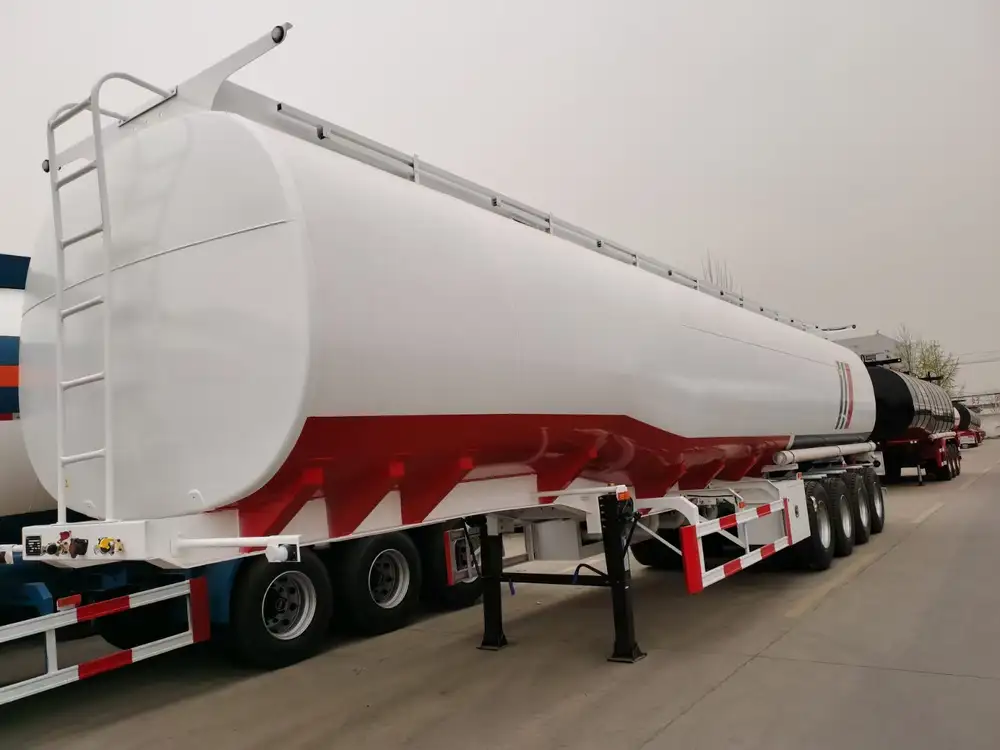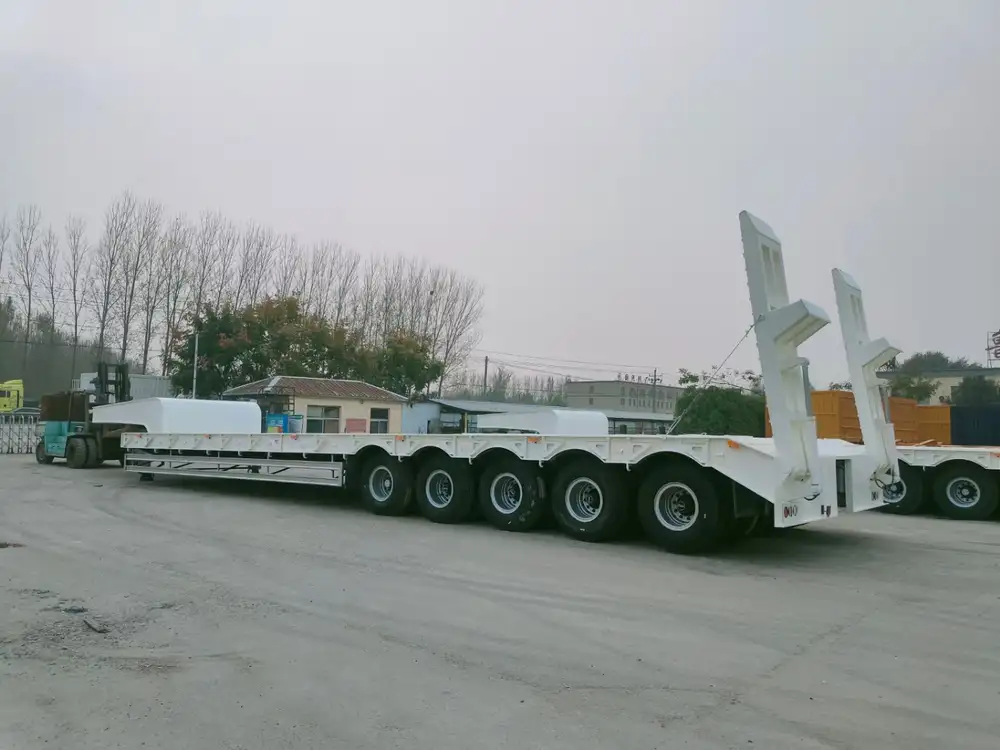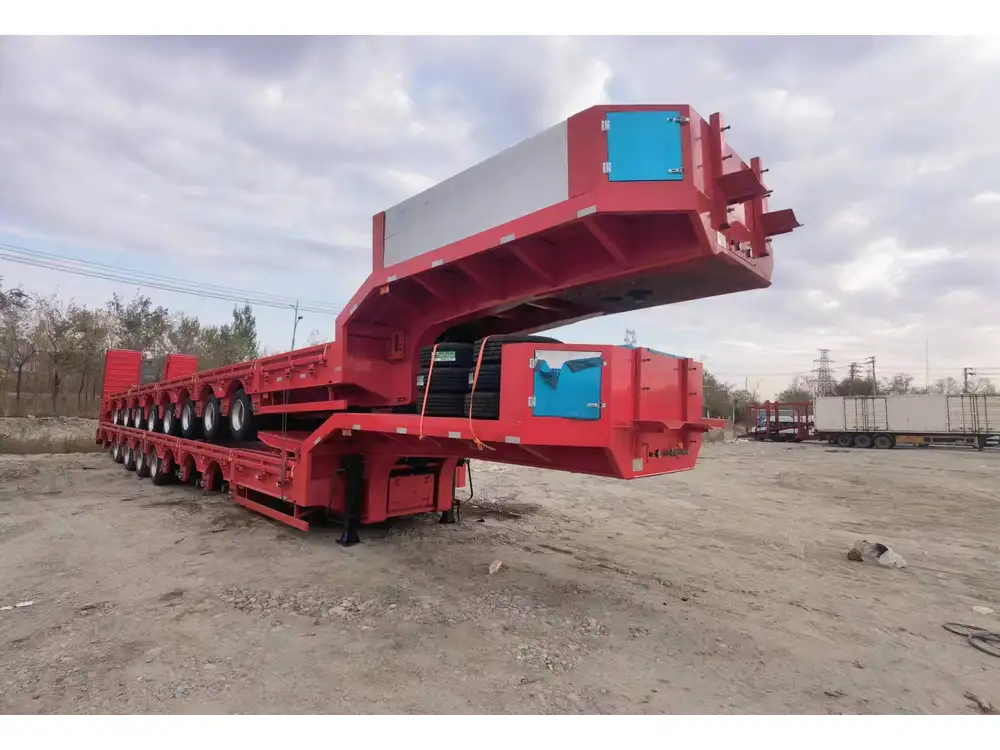Semi-trailers are an integral part of the logistics and transportation industry. They are the backbone of freight hauling, allowing for the movement of goods across vast distances. Understanding the size of a semi-trailer is crucial for manufacturers, carriers, and anyone involved in shipping. This guide provides a detailed analysis of semi-trailer dimensions, types, regulations, and practical applications to address the key concerns for stakeholders in the transportation sector.
Types of Semi-Trailers
1. Flatbed Trailers
Flatbed semi-trailers are characterized by their open design, allowing for easy loading and unloading of cargo from the sides or top. Common dimensions include:
- Length: 48 to 53 feet
- Width: 102 inches (8.5 feet)
- Height Limit: Typically, a maximum height of the load is around 13.5 to 14 feet from the ground.

2. Dry Van Trailers
These are the most commonly used semi-trailers for transporting goods that require protection from the elements. Their specifications are:
- Length: Often 48 or 53 feet
- Width: Generally 102 inches (8.5 feet)
- Height Limit: Usually a maximum of around 13.5 feet.
3. Refrigerated Trailers (Reefers)
Reefer trailers are designed for transporting temperature-sensitive goods. They typically exhibit:
- Length: 48 to 53 feet
- Width: 102 inches
- Height Limit: Maximum height can reach around 13.5 feet, similar to dry vans.
4. Tanker Trailers
Used for transporting liquids, such as fuel or chemicals, tanker trailers are unique in their design:
- Length: Standard sizes are 48 to 53 feet
- Width: Typically 102 inches
- Height Limit: Maximums vary but are generally around 13.5 feet.

5. Specialized Trailers
Specialized trailers, including lowboys for heavy equipment transport, can vary significantly. Typical characteristics include:
- Length: Ranges widely according to cargo needs, 48 to 53 feet being common.
- Width: Can exceed 102 inches for oversized loads.
- Height Limit: Often lower than standard trailers to facilitate heavy loads.
Standard Sizes: A Quick Overview
| Trailer Type | Length (Feet) | Width (Inches) | Max Height (Feet) |
|---|---|---|---|
| Flatbed | 48-53 | 102 | 13.5 |
| Dry Van | 48-53 | 102 | 13.5 |
| Refrigerated (Reefer) | 48-53 | 102 | 13.5 |
| Tanker | 48-53 | 102 | 13.5 |
| Specialized | 48-53 (varies) | 102 (varies) | 12-13.5 (varies) |
Federal and State Regulations
The size and weight of semi-trailers are regulated to ensure safety on the road. The maximum legal length for a semi-trailer in the United States is typically:
- 53 feet, exclusive of the tractor and cargo.
In terms of width:
- The standard legal width is 8.5 feet (102 inches), while some states allow up to 10 feet for certain types of loads.
Height restrictions are generally set at 13.5 to 14 feet, but this can vary, so always check local regulations. Weights are also regulated, with a maximum of 80,000 pounds on standard configurations.

Calculating Dimensions for Specific Needs
When determining which semi-trailer to use, factors such as cargo type, weight, and destination must be considered. Here are the steps to ensure you’re making the right choice:
Assess Cargo Type:
- Dry Goods: A dry van or flatbed trailer may be suitable.
- Temperature-Sensitive Goods: Reefer trailers are ideal.
- Liquids: Tanker trailers are necessary.
Calculate the Volume and Weight:
- Semi-trailer volume is determined by multiplying the interior dimensions (Length x Width x Height).
- Ensure the weight complies with Department of Transportation regulations.
Consider Loading and Unloading Options:
- For instance, if you need flexibility in loading/unloading, a flatbed might be preferable.
Route Planning:
- Ascertain road and bridge height limits on your intended route.
Conforming to Weight Restrictions
Semi-trailer weight limits can become complex, influenced by a variety of state-specific regulations. In most cases, the following should be considered:
- Gross Vehicle Weight (GVW): Should not exceed 80,000 lbs for combined truck and trailer weight.
- Axle Weight: Typically limits per axle are specified (20,000 lbs for a single axle and 34,000 lbs for tandem axles).
Failing to conform to these weight restrictions can result in hefty fines and roadway safety issues.
The Importance of Size in Freight Transportation

Load Optimization
Optimizing trailer size according to load requirements not only enhances operational efficiency but also maximizes profit margins. Choosing the correct size can lead to:
- Better Fuel Efficiency: Full trailers can mean fewer trips are needed.
- Reduced Shipping Costs: Higher payloads lead to lower per-unit shipping costs.
Safety Considerations
Understanding semi-trailer size can mitigate safety risks. Overloaded trailers can lead to braking issues, increased stopping distances, and potentially hazardous conditions. Following specified size dimensions aligns with safety regulations, ensuring that semi-trailers maintain road integrity.
Environmental Impact
Conversely, selecting appropriately sized trailers contributes to reducing carbon footprints. Larger, underused trailers may consume excess fuel, while optimally loaded trailers create efficiencies in fuel usage.

Conclusion: Choosing the Right Semi-Trailer Size
In conclusion, the right semi-trailer size depends on multiple factors, including the nature of the cargo, routing specifics, and compliance with regulations. Proper assessment ensures not only efficiency but also safety and sustainability in freight transportation.
Understanding semi-trailer dimensions is crucial for logistics and freight professionals. This guide serves as a roadmap to navigate the complexities of semi-trailer specifications, enabling smarter decisions that drive efficiency. With this knowledge, manufacturers can design better trailers suited to market demands, and carriers can streamline their operations, ensuring they meet the needs of customers with precision and reliability.
Whether navigating federal and state regulations, optimizing load capacity, or considering environmental impacts, the journey toward a better understanding of semi-trailers begins with recognizing their dimensions and the vital role they play in the transportation ecosystem.



